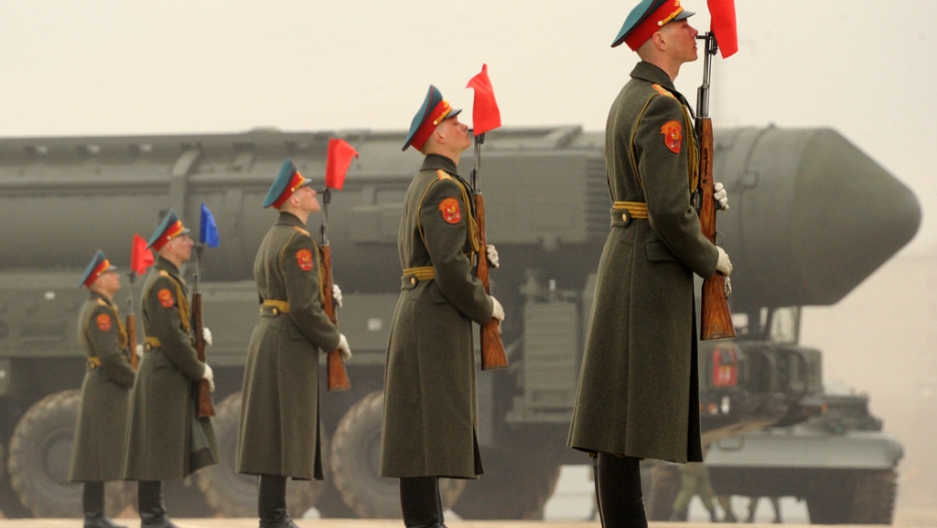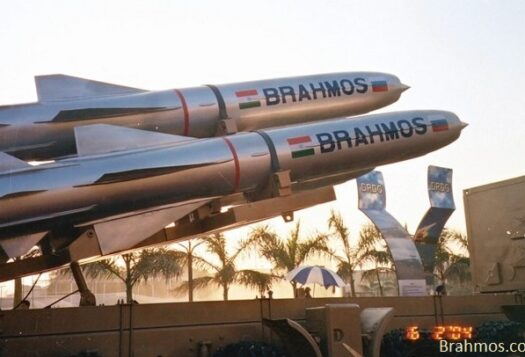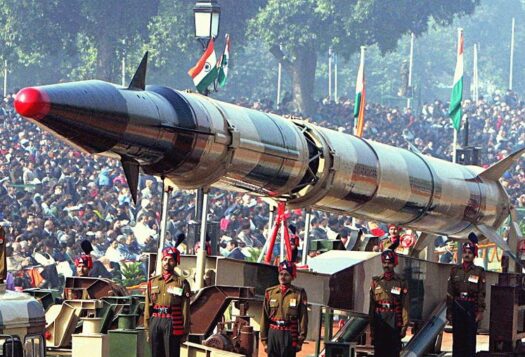
Review of “The Impact of MIRVs and Counterforce Targeting on the U.S.-Soviet Strategic Relationship” by Alexei Arbatov and Vladimir Dvorkin in The Lure and Pitfalls of MIRVs: From the First to the Second Nuclear Age
Chapter Summary
According to Alexey Arbatov and Vladimir Dvorkin’s “The Impact of MIRVs and Counterforce Targeting on the U.S.-Soviet Relationship” in the Stimson Center’s The Lure and Pitfalls of MIRVs: From the First to the Second Nuclear Age, the advent of multiple independently targetable re-entry vehicles (MIRVs) had a profoundly negative impact on strategic stability between the United States and Soviet Union during the Cold War. The authors review the evolution of MIRVs in the context of the U.S.-USSR strategic relationship, outlining the way in which these systems influenced the development of each side’s strategic nuclear forces and contributed to an arms race. They also underscore the importance of learning from the U.S.-Soviet example in order to sustain existing strategic balances and to avoid unnecessarily large military expenditures that could erode nuclear stability in Asia.
In their concluding analysis, Arbatov and Dvorkin discuss how MIRVed systems influenced arms control negotiations between the two countries. As the two countries began grappling with emerging threats to strategic stability, both sides recognized ballistic missile defense (BMD) systems as endangering mutual vulnerability. Thus, both the United States and the Soviet Union pursued the development of MIRVs in order to prevent either side from gaining any sort of defensive advantage through the development of BMDs. Influenced by this interaction of ballistic missile defenses and MIRVs, the strategic doctrines of the two superpowers negatively shaped their military relations until the very end of the Cold War. Although the two superpowers undertook arms control efforts to stabilize the escalating nuclear arms race, the negotiation process always left bargaining chips on the table. It became politically impossible to abandon systems that were not banned as part of the arms control discussions. MIRVs and their numbers invariably became important in the context of forming perceptions about the adversary’s strengths. For both sides, nuclear buildups became necessary elements of international bargaining processes.
Convincing Arguments
An important contribution of this chapter is Arbatov and Dvorkin’s coverage of how growing American nuclear capabilities shaped Soviet nuclear capabilities and vice-versa. For example, the authors compellingly argue that the American push toward MIRVs, generated to counter the incipient Soviet ABM program, actually pressured the Soviet Union to develop MIRVs itself. The authors clarify the confusing action-reaction chain of American and Soviet nuclear developments to create a compelling narrative that this arms racing was the primary cause of nearly 20 wasted years for meaningful strategic arms control between the first Strategic Arms Limitation Talks (SALT I) in 1972 and the first Strategic Arms Reduction Treaty (START I) of 1991. With this history in mind, it seems entirely plausible that a similar action-reaction phenomenon could take hold in South Asia, which could undermine Pakistan’s confidence in its strategic deterrent and persuade it to pursue additional capabilities.
Another important lesson from the Cold War example is that once MIRVs have been fully tested and deployed, it is nearly impossible to ban them. For example, American policymakers opposed to the SALT II negotiations pointed to the vulnerability of American intercontinental ballistic missiles (ICBMs) to Soviet MIRVs as a key justification for dismissing the treaty. Applying this insight to a modern context, China has already deployed MIRV-equipped missiles and experts believe that India and Pakistan are likely to follow suit. As MIRV capabilities are developed and deployed in the region, all sides may be tempted into expanding their respective nuclear arsenals so as to gain leverage in the international arena. This will likely create a situation in which Beijing, New Delhi, and Islamabad remain disinclined to undertake arms control negotiations, just as Moscow was initially reluctant to enter SALT negotiations based on a fear of lagging behind Washington. India in particular remains wary of arms control measures – such as the strategic restraint regime proposed by Pakistan – out of the fear that they would compromise its future force building plans vis-à-vis China. The role of MIRVs in affecting the willingness of China, India, and Pakistan warrants close observation in the years ahead.
Reasoned Critique
Arbatov and Dvorkin hold arms racing responsible for the lack of significant arms control agreements for most of the Cold War. This was a factor, but so was political decisionmaking. Moscow’s decision to finally enter the SALT negotiations can be attributed to the Soviet strategic effort during the 1960s that led to an elimination of Soviet inferiority in the nuclear missile balance that had existed earlier. Moscow was expected to surpass U.S. arsenal numerically, if not in terms of performance, by the late 1960s. Even as there was growing satisfaction in Moscow about the growing strategic balance, Soviet leaders began viewing the MIRV and BMD programs in the United States with increasing unease. In fact, the realization in Moscow about the dangers associated with nuclear war emerged as early as 1956 when Khrushchev rejected the previous view under Stalin that nuclear weapons did not change the nature of war. Likewise, Brezhnev also cautioned against the dangers of a nuclear war. Moscow’s decision to enter SALT negotiations was an effort, in part, to mitigate the dangers associated with nuclear war even as it sought to improve Soviet position in the strategic balance. An analysis of the Soviet Union’s dual approach towards reducing Soviet inferiority in the missile balance and also addressing the growing strategic arms race would provide greater insight into whether it was technological issues or political decisionmaking that led to Moscow’s consequent decision to enter the SALT negotiations, but this is a matter the authors did not cover in their chapter.
Future Research
This chapter highlights the significance of technological developments leading to the initial U.S. decision to equip missiles with MIRVs and how the Soviet Union had to intensify its own efforts in MIRVs to maintain strategic parity. The assertions merit independent investigations into both the development and consequent deployment decisions of MIRVs made in the USSR. As noted above, Moscow’s intent in developing the capability and its eventual decision to deploy the weapons would also help ascertain whether the political decision to deploy such weapons preceded the technological capability. A look at Moscow’s R&D programs in relation to its deployment decisions would also help understand the purpose and intent of Moscow’s MIRV program and also how it ultimately influenced the decision to not accept the inclusion of MIRVs in subsequent arms control negotiations.
As mentioned previously, the constant pursuit of MIRVs by both the United States and the Soviet Union during the Cold War undermined the success of arms control negotiations. For example, the authors argue that MIRVs became a significant sticking point in SALT negotiations because the inclusion of “aircraft with cruise missiles in any significant quantity in the MIRVed missile sub-limit would have required the reduction of a corresponding number of existing MIRVed ICBMs and SLBMs” (p. 87). However, one could also argue that the omission of MIRVs from negotiations such as SALT could highlight the inability of the negotiation process to check technological developments and not the reverse. It would therefore be relevant to investigate deeper into both strategic and political reasons why MIRVs never made it into the arms control agenda.
The Stimson Center recently released The Lure and Pitfalls of MIRVs: From the First to the Second Nuclear Age, an edited volume that takes a retrospective look at the U.S.-Soviet experience with MIRVs and explores the second coming of MIRVs in contemporary Asia. In this SAV review series, SAV contributors Sitakanta Mishra, Amina Afzal, Rabia Akhtar, Sadia Tasleem, and Debak Das review each chapter with special attention to the implications for South Asia and future research. Read the entire series here.
***


